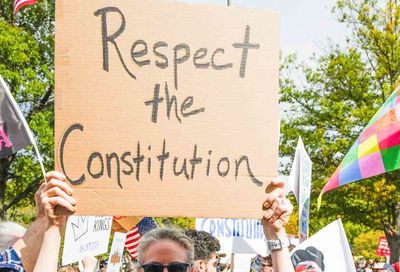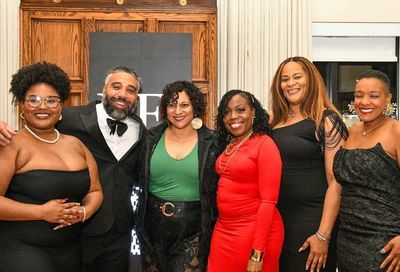Purchasing Power
If you do your homework, it’s easy to overcome the sales hurdles at traditional dealerships.
Tesla may be on to something. The California-based automaker renowned for its all-electric Model S sedan has a thoroughly unique business model for getting its vehicles into customers’ hands. Instead of licensing franchised dealerships in every state, Tesla instead opens stores where potential buyers can view one or two Model S sedans, browse paint colors, interior trims, powertrains, optional extras, even configure their ideal car on iPads running a custom Tesla app. If they’re happy with their choice, they’re given a finance quote – or, for the well-heeled, cash payments are accepted – and then, after paying the requisite deposit, their new car will be constructed and shipped to their home address. Of course, if you’d rather avoid leaving the house altogether, because every order is processed by Tesla itself, you can also log onto the Tesla website, configure a car and have it delivered to your door without ever speaking to a live human.
It’s proven to be an effective method. Tesla was named by a Wall Street Journal analyst as the world’s most important car company. The Model S is exceeding sales targets, with an expected 55 percent increase in overall sales in 2014 compared with last year. The sedan has also received near universal praise from reviewers and customers, while the company’s stock was the top performer on the Nasdaq 100 last year. Of course, not everyone is happy. In several states, dealership associations have moved to bar Tesla’s direct-to-consumers sales approach, in part because dealerships lose out on the lucrative commissions each sale brings and partly out of fear in case other automakers adopt similar selling strategies, which could further impact the power that the traditional dealerships wield in the auto market.
Consumers, too, lose out – at least partially – with Tesla’s model. There’s no haggling over a Model S, you pay what Tesla asks, whether it be in cash or taken out on finance. Consumers can’t get free options, demand free mats or pressure sales people into offering a better deal than they otherwise would have. Tesla’s faceless purchasing methods remove any negotiation from the buying process.
However, that in and of itself can be a boon. Consumers know they won’t get a worse deal than someone living on the other side of the country, and prices aren’t inflated to cover dealerships fees and commissions – what you pay for the Model S factors in Tesla’s own profit margins and operating costs and nothing else. It also removes one of the biggest obstacles to buying a new car: salespeople.
The gatekeepers of the new car world, an eternal middleman thorn in every buyer’s side, salespeople staff each dealer, eager to welcome you in and even more eager to wring your wallet dry. I won’t paint every salesperson in every dealership with the same brush – there are some who genuinely care about the customer – but there are undoubtedly an overwhelmingly large number of sales staff who are more concerned with your money than with giving you a great deal on the car you want. It’s business: they earn commission on car sales and have regular goals to achieve, but it also offers one more hurdle consumers must overcome on the road to owning a new car. Of course, it’s easy to avoid falling into the numerous traps laid out to lull you into overspending on that new car, so long as you stick to some tried-and-tested methods.
The most obvious part of buying any car is to know what you want, what you can afford, and how you’ll be paying for it. Research your chosen auto on a service like Kelley Blue Book, which lets you view the average price people are paying for a particular model in your area. That figure is what you’ll use to secure a great deal. If you’re lucky enough to have the cash amount, you’re in the strongest possible position from a buying perspective. You won’t have to negotiate finance or worry about securing a deposit. Dealers love cash buyers, but they’re also the biggest threat to their bottom line – if you’re able to pay for the car up front, you hold all of the power. State the price you’re willing to pay for the car and let the dealer either meet that price, or haggle you up to a point you’re both comfortable with. Don’t think you have to appease the dealer – if they won’t match your price, there are plenty of other franchises eager to take your hard-earned cash.
For those taking a car out on lease or finance, things are trickier. If the finance comes from a third party, you’re in a similar position to cash buyers as you’ll have the full amount to play with. If, however, you take finance from the dealer, they’ll have considerably more power to manipulate the figures and have you spending more over the term of your lease. Again, Kelley Blue Book will offer a representative finance figure for the model you’re looking at – take this number and state that you want something in that range. Be as specific and sensible as possible: if you have a monthly budget you want to stick to, quote lower than that to the dealer. I told one dealer my maximum budget was $500, but I wanted to pay less than that. They offered a monthly payment of $499.30. Needless to say, I didn’t take it, and I learned never again to tell a sales person my real budget. Go low, though not unreasonably so, and let the dealer haggle you up to a price you’re both comfortable with.
Don’t be afraid to play dealers against one another, either. The easiest way to do this is to avoid the simplest mistake many people make when they walk into a showroom – never befriend your salesperson. While we’d like to believe that they have our best interests at heart, you’re there to secure yourself a great deal, not find a drinking buddy or squash partner. Remain polite but impassive – don’t give too much away and make it clear that emotion won’t play a part in your decision. You’re here to make a business transaction. With that established, take whatever quote your first dealer provides and see if another can better it. Chances are, the second, or third, or fourth dealer will be keen to secure your custom, and it can make for lucrative discounts or free optional extras. You’ll be surprised at what a few simple words – “The other dealer I visited…” – can do. When they know you’re shopping around, they’ll want to make sure your check ends up in their bank account.
Lastly, fully research the car you want. Many dealers like to throw words around to make the car they’re selling sound like a better deal than it is. If you can cut through the marketing crap and demonstrate that you already know what the vehicle has, what it’s worth and what you want to pay for it, they should come around pretty quickly. Furthermore, if you’re unlucky enough to get a salesperson who still thinks car buying is a straight man’s game, don’t be afraid to call them on it. Ladies: don’t let a misogynist dealer patronize you, tell him that he’s being an ass and take your money elsewhere. Gentlemen (who like other gentlemen): if you detect a hint of homophobia, walk out of there and make sure they know why. Money talks and money also walks – into the doors of a more accepting, modern dealership.
Tesla’s faceless model of sales may have cut out the stress of buying a car, but there’s no denying it also removes the potential to secure a great deal. As long as you do your homework, speak with confidence, and approach your finances sensibly, it’s easy to overcome the sales hurdles at traditional dealerships. What’s more, you’ll enjoy driving that new car even more when you’ve paid a great deal less than you otherwise would have for it. Now take these tips and go, haggle like a pro.
Image Credit: Diego Delso
Support Metro Weekly’s Journalism
These are challenging times for news organizations. And yet it’s crucial we stay active and provide vital resources and information to both our local readers and the world. So won’t you please take a moment and consider supporting Metro Weekly with a membership? For as little as $5 a month, you can help ensure Metro Weekly magazine and MetroWeekly.com remain free, viable resources as we provide the best, most diverse, culturally-resonant LGBTQ coverage in both the D.C. region and around the world. Memberships come with exclusive perks and discounts, your own personal digital delivery of each week’s magazine (and an archive), access to our Member's Lounge when it launches this fall, and exclusive members-only items like Metro Weekly Membership Mugs and Tote Bags! Check out all our membership levels here and please join us today!



























You must be logged in to post a comment.